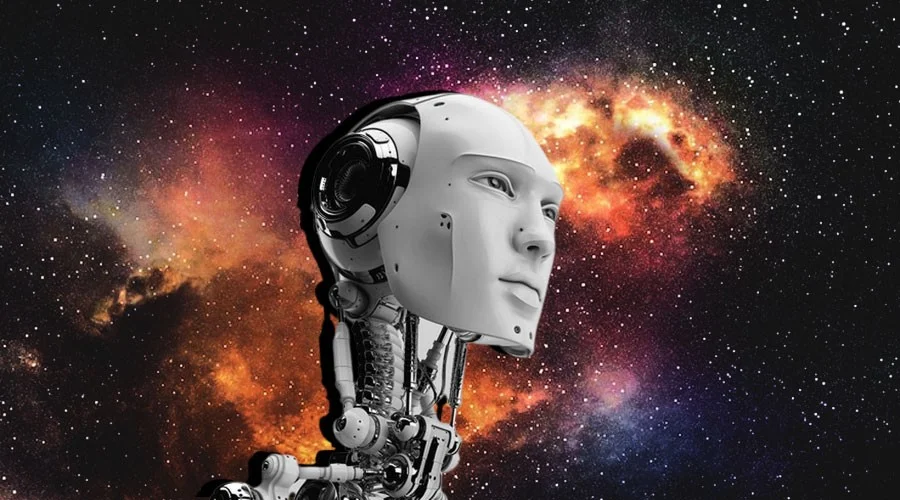Imagine standing on the shore of a vast ocean. Waves crash endlessly, carrying with them countless drops of water—each one unique, yet indistinguishable when seen from afar. This is what our modern world feels like when it comes to information. Every second, billions of devices generate streams of data: from social media posts and GPS signals to medical scans, banking transactions, and satellite images. This unstoppable tide of information has a name: Big Data.
But Big Data is not just about size. It is about the unprecedented way we can now capture, store, and analyze information. It has transformed from a technical concept used by scientists and engineers into a force shaping every aspect of human life. From how we shop to how doctors save lives, from understanding climate change to predicting economic trends, Big Data silently powers decisions that impact billions.
To grasp the basics of Big Data is to understand one of the most profound revolutions of our time—a revolution not of machines replacing humans, but of information amplifying human potential.
Defining Big Data: Beyond Just “A Lot of Data”
At first glance, Big Data seems obvious: it must mean “a lot of data.” And yes, it involves massive quantities. But what makes data “big” is not merely its volume—it is its complexity, speed, and variety. Think of it as a living organism rather than a static number.
Volume is the most visible characteristic. Every minute, millions of emails are sent, hours of video are uploaded, and countless digital footprints are left behind. Storing and managing this amount of information requires infrastructure far beyond traditional databases.
Velocity adds another layer. Data doesn’t trickle in—it floods systems in real time. Stock markets shift in milliseconds based on incoming trades. Smart sensors in cars generate constant streams of data while the vehicle moves. Velocity means that Big Data systems must handle information as it arrives, without pause.
Variety makes the puzzle even more intricate. Data no longer comes neatly structured in rows and columns. It exists as text, audio, images, videos, 3D scans, and even signals from wearable devices. Understanding this mishmash requires tools that can interpret meaning across multiple formats.
Finally, there’s veracity—the reliability of data. In a world overwhelmed with information, distinguishing accurate signals from misleading noise is essential. Big Data is not just about quantity; it’s about making sense of what matters.
The Origins of Big Data
Though it feels like a modern phenomenon, Big Data has ancient roots. Humans have always sought ways to gather and analyze information. Thousands of years ago, Mesopotamian merchants carved symbols into clay tablets to track trade. The first census in history, in 3800 BCE Egypt, was an early form of large-scale data collection.
As societies grew, so did the challenge of managing information. The invention of paper, printing, and later computers allowed humans to store and process more data than ever before. In the mid-20th century, scientists began using electronic databases to manage records. But it wasn’t until the rise of the internet, smartphones, and cloud computing that data began expanding at an astronomical rate.
The term “Big Data” emerged in the early 2000s when technologists realized traditional tools couldn’t handle the massive, fast, and diverse information produced by modern digital systems. Companies like Google and Amazon pioneered new ways to store and process data, developing distributed computing systems that could handle the explosion of online activity.
Today, Big Data is no longer a niche concept—it is a foundational element of modern technology, powering artificial intelligence, personalized services, and global decision-making.
How Big Data Works
At its heart, Big Data is about transforming raw information into actionable knowledge. This process involves several steps that occur almost invisibly as we use our devices daily.
Data is first generated—through sensors, cameras, apps, transactions, and countless other sources. This raw data is often unorganized and massive in scale. The challenge is to capture it without losing crucial details.
Once collected, data must be stored. Traditional databases store structured information efficiently but struggle with massive, unstructured data. Big Data relies on distributed storage systems—networks of servers working together, often across different locations. Cloud services like AWS, Azure, and Google Cloud provide scalable storage solutions, allowing data to grow without physical limits.
Processing is the next hurdle. Analyzing terabytes or even petabytes of information requires powerful computing frameworks. Technologies like Hadoop and Spark break tasks into smaller parts, process them simultaneously across many servers, and combine results at incredible speeds.
Finally, the processed data is analyzed and visualized. Machine learning algorithms detect patterns invisible to humans. Statistical models forecast future trends. Visualization tools turn complex numbers into interactive dashboards, making insights understandable and actionable.
This entire cycle happens continuously and rapidly. For example, when you stream a movie, recommendation systems instantly analyze your viewing history, compare it with millions of other users, and suggest what you might enjoy next—all powered by Big Data working in real time.
Big Data in Everyday Life
Though invisible, Big Data quietly shapes daily experiences. In healthcare, it helps doctors detect diseases earlier than ever before by analyzing genetic information, medical histories, and real-time patient monitoring. In transportation, it powers ride-sharing services that match drivers with passengers efficiently, optimizing routes and reducing traffic.
E-commerce platforms like Amazon thrive on Big Data. Every click, every product view, every abandoned shopping cart feeds into algorithms that refine your next shopping experience. Similarly, streaming services like Netflix or Spotify analyze vast user behavior to deliver tailored recommendations, turning entertainment into a deeply personalized experience.
Even urban planning relies on Big Data. Smart cities use sensors to monitor traffic, pollution, and energy consumption, enabling more sustainable and efficient city management.
In ways both visible and hidden, Big Data informs everything from weather forecasts and agricultural planning to fraud detection and space exploration. It has become as essential to modern life as electricity and the internet itself.
The Power and Promise of Big Data
Big Data’s power lies in its ability to reveal patterns previously unimaginable. Consider climate science. For centuries, humans struggled to predict weather beyond a few days. Today, satellites and advanced models analyze terabytes of atmospheric data to forecast storms, track climate change, and guide global policy decisions.
In medicine, Big Data is accelerating the quest to understand complex diseases. Massive genomic datasets allow scientists to identify genetic markers for cancer, diabetes, and other conditions, paving the way for personalized treatments tailored to each individual’s unique biology.
Financial institutions harness Big Data to detect fraudulent transactions in milliseconds, protecting millions of people from theft. Retailers analyze purchasing behavior to anticipate demand, reducing waste and improving supply chains.
Perhaps most astonishing is Big Data’s role in artificial intelligence. Machine learning algorithms, trained on enormous datasets, now recognize speech, translate languages, and even generate art and music. These capabilities were once the realm of science fiction; today, they are part of daily reality.
Challenges and Risks of Big Data
Yet, as with all revolutions, Big Data comes with challenges. Privacy is the foremost concern. Every digital action—searching online, using a fitness tracker, or making a purchase—leaves a trail of data. When collected and analyzed, this information can reveal intimate details about individuals. Safeguarding privacy while harnessing data’s potential is a complex and ongoing struggle.
Data security is another pressing issue. Massive datasets attract cyberattacks seeking to steal or manipulate information. Organizations must invest heavily in cybersecurity to protect sensitive data from breaches that can disrupt economies and endanger lives.
The quality of data also matters. Big Data is only as useful as it is accurate. Poorly collected or biased data can lead to flawed analyses and harmful decisions. For instance, biased datasets in hiring algorithms can perpetuate discrimination instead of eliminating it.
Finally, there is the challenge of interpreting data responsibly. While algorithms can detect patterns, human oversight is crucial to ensure ethical and meaningful use. Without careful regulation and transparency, Big Data risks becoming a tool for manipulation rather than empowerment.
The Future of Big Data
Looking ahead, Big Data’s role will only grow. The rise of the Internet of Things (IoT), with billions of connected devices—from smart refrigerators to industrial robots—will generate unimaginable streams of data. Quantum computing promises to process these vast datasets at speeds currently beyond reach.
In healthcare, Big Data may unlock cures for diseases once thought incurable. Environmental scientists will use it to fight climate change, monitoring ecosystems with precision never before possible. Education systems will personalize learning experiences for every student, guided by real-time data on progress and comprehension.
At the same time, debates about data ethics will intensify. Questions of ownership—who truly controls the data we generate—and equitable access to data-driven opportunities will shape the next decade. Balancing innovation with fairness and privacy will be one of humanity’s greatest challenges.
Why Big Data Matters
Ultimately, Big Data matters because it changes how we see and interact with the world. It is not just a technological phenomenon; it is a shift in understanding. For the first time in history, humanity has the tools to capture the complexity of life at a massive scale and learn from it.
From predicting pandemics to understanding the cosmos, Big Data enables discoveries that improve lives and expand human knowledge. It turns seemingly chaotic information into clarity, guiding decisions that shape our future.
Yet, it also reminds us of our responsibility. Data is not abstract—it represents people, communities, and ecosystems. Harnessing it wisely means respecting privacy, ensuring fairness, and using insights for the common good.
Big Data is more than technology. It is a mirror of our interconnected world, a lens through which we can glimpse solutions to the challenges ahead. As we navigate the data-driven future, understanding its basics is not optional—it is essential for every citizen of the digital age.






